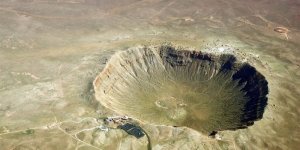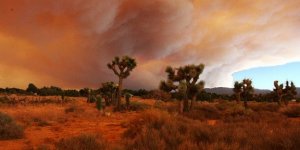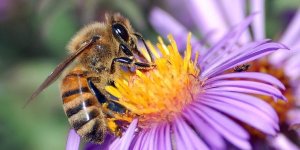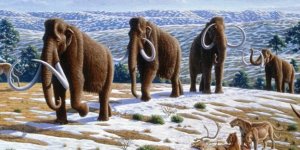Science News

Meteorites and comets have captured the public imagination for centuries. They inspire awe when we see them shoot across the night sky (...) »

2018 eruption of Kilauea volcano was one of the largest volcanic events in Hawaii in 200 years. »

Chemical aging of fire-emitted particles can lead to more intense storms. »

Advance could boost recommendation algorithms and internet searches. »

High-energy neutrino detected after a star's destruction as it is consumed by a black hole. »

Researchers placed nanosensors in microfibers to create a 'smart bandage'. »

The mosquito protein AEG12 strongly inhibits the family of viruses that cause yellow fever, dengue, West Nile, and Zika (...) »

New research led by the University of Cambridge has found rare evidence (...) »

Computer models for predicting slide-prone areas confront lack of subsurface data. »

The most diverse bee communities have the lowest levels of three common viral pathogens. »

The history of dogs has been intertwined, since ancient times, with that of the humans who domesticated them. But how far back does that history go in the Americas and which route did dogs use to enter that part of the world? »

In the largest ever study of its kind into an equine pathogen, scientists in 18 countries used the latest DNA sequencing techniques to track the bacteria (...) »

In a thought-provoking new paper, a physicist suggests the whole universe could be a single neural network—a competing “theory of everything” that could unite quantum and classical mechanics, he says. »

Discovery of new lineage, insights into when and how fast mammoths adapted to cold climate. »

Researchers from the University of Cambridge and Skoltech in Russia have shown that polaritons, the quirky (...) »

Sea ice is like a closed window for the ocean. »

Researchers have discovered that DNA from the mitochondria acts as a danger signal in the body and triggers (...) »

A study has found that cuttlefish can pass a fishy version of the ‘marshmallow test’ – and those that can delay gratification the longest are the most intelligent. »

Researchers have analysed decades’ worth of data on the impact of repeated fires on ecosystems across the world. »

Researchers develop a system to identify drugs that might be repurposed to fight the coronavirus. »

Water treatment has the potential to remove nearly all viruses from drinking water. »

A computer network closely modelled on part of the human brain is enabling new insights into the way our brains process moving images - and explains some perplexing optical illusions. »

New framework for understanding super-Earths’ interiors prerequisite for assessing habitability potential. »

Scientists have used a technique to grow bile duct organoids – often referred to as ‘mini-organs’ (...) »

In the Mojave Desert, burrowing mammals are weathering hotter, drier conditions. »

An Agricultural Research Service entomologist has discovered the Nosema ceranae parasite that causes major problems and death in honey bees works by hijacking its host's iron for itself. »

What remains of the star that exploded just outside our galaxy in 1987? Debris has obscured scientists’ view, but two of NASA’s X-ray telescopes have revealed new clues. »

Revised temperature record affirms role of greenhouse gases in recent millennia. »

Scientists at the National Institutes of Health have used two different (...) »

One day 66 million years ago, Earth suddenly transformed from being a verdant, dinosaur-ridden world to a soot-covered apocalyptic hellscape. »

Scientists have identified a new phenomenon they describe as "interactive dreaming", where people experiencing deep sleep and lucid dreams are able to follow instructions, (...) »

Gliomas are common brain tumors that comprise about one third of all cancers of the nervous system. »

When most people hear "food contamination," they think of bacteria on unwashed fruits or vegetables or undercooked meat. However, there are other ways for harmful contaminants to get into food products. »

Restoring animal habitat requires much more than just the right plants. »

Hydrocarbons that trace their origin to biological sources may play a large role in ocean ecology. »

Chloroplast-fortified 3D-printer ink may strengthen products like custom sneaker soles. »

Quagga mussels' spread across 4 of the 5 Great Lakes has altered natural phosphorus exchange rates. »

Identification takes next step to making a widely available plant a source for energy. »

Global synthesis reveals bird traits that promote Lyme and flags high-risk species. »

Sourdough is an excellent model system for studying interactions between microbes. »

Researchers have developed a computerized adaptive screener to identify youth at risk for attempting suicide. »

When the Laki volcano erupted in 1783, its effects rippled around the world. »

New type of optical computing could solve highly complex problems that are out of reach for even the most powerful supercomputers. »

Research opens the door to applications in recycling and remediation. »

Team used deposits in the caves of the Mediterranean island of Mallorca. »

How the larvae of colorful clownfish that live among coral reefs in the Philippines are dispersed varies widely, depending on the year (...) »

Simple soil remediation can substantially reduce levels of the toxic metal lead in the blood of children living in heavily contaminated areas, says a new study conducted in Bangladesh. »

Entomologist Akito Kawahara's message is straightforward: We can't live without insects. (...) »

AI technique enables researchers to study data trends more quickly, improving prediction ability. »

Carrots, while in the ground, are home to a community of microorganisms, some members of which wage a kind of battle (...) »